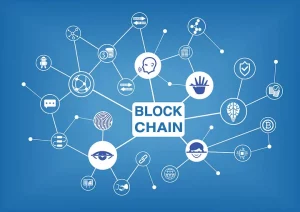Introduction:
Trends in Higher Education 2024 in the ever-evolving realm of higher education, staying abreast of emerging trends is paramount. As we delve into 2024, innovation stands as the cornerstone of educational advancement. From personalized learning to blockchain integration, this article elucidates six exciting trends shaping higher education in 2024.
Personalized Learning:
Trends in Higher Education 2024 in the digital era, personalized learning has emerged as a pivotal trend in higher education. Institutions are leveraging technology to cater to diverse learning styles and preferences. Through adaptive learning platforms and data analytics, educators can customize curriculum delivery, fostering enhanced student engagement and academic outcomes. By accommodating individual needs, personalized learning cultivates a dynamic educational experience conducive to student success.
Blockchain Integration:

Trends in Higher Education 2024 blockchain technology is revolutionizing the landscape of credentialing within higher education. By decentralizing record-keeping and ensuring data integrity, blockchain offers a secure and transparent means of verifying academic credentials. This innovation streamlines processes such as degree verification and transcript authentication, mitigating fraud and enhancing the credibility of academic qualifications. As institutions embrace blockchain integration, the future of credentialing is poised for unparalleled efficiency and reliability.
Virtual and Augmented Reality:
Trends in Higher Education 2024 virtual and augmented reality (VR/AR) are reshaping pedagogical approaches by offering immersive learning experiences. Through simulated environments and interactive simulations, students can engage with course material in unprecedented ways. VR/AR technologies facilitate experiential learning across diverse disciplines, from medical training to architectural design. By transcending traditional boundaries, these immersive technologies enrich educational experiences, fostering creativity and critical thinking among students.
Driving Informed Decision-Making
Trends in Higher Education 2024 data analytics has emerged as a powerful tool for driving informed decision-making in higher education. By harnessing vast amounts of institutional data, educators can glean actionable insights into student performance, retention rates, and learning outcomes. Predictive analytics algorithms enable early intervention strategies, empowering institutions to provide timely support to at-risk students. Moreover, data-driven insights inform strategic initiatives, facilitating continuous improvement and institutional excellence.
Cultivating Cross-Cultural Exchange

Trends in Higher Education 2024 in an increasingly interconnected world, higher education institutions are fostering global collaborations to enrich the educational experience. Through international partnerships, students gain exposure to diverse perspectives and cultures, preparing them for success in a globalized workforce. Collaborative research initiatives transcend geographical boundaries, tackling complex societal challenges through interdisciplinary cooperation. By embracing global collaborations, institutions nurture a culture of inclusivity and innovation, enriching the fabric of higher education.
Blending Tradition with Innovation
Hybrid learning models represent a fusion of traditional classroom instruction with online learning modalities. As institutions adapt to the evolving educational landscape, hybrid models offer flexibility and accessibility to diverse student populations. Combining face-to-face interactions with digital resources, hybrid learning caters to varying learning preferences while promoting interactive engagement. This versatile approach empowers students to tailor their educational journey, fostering autonomy and self-directed learning.
Trends in Higher Education 2024: Innovation in Action
Trends in Higher Education 2024 amidst rapid technological advancements and evolving pedagogical paradigms, higher education in 2024 is characterized by innovation in action. From personalized learning to global collaborations, institutions are embracing transformative trends to enhance the educational experience. By harnessing the power of blockchain, virtual reality, and data analytics, educators are driving forward institutional excellence and student success.
Conclusion:
As higher education institutions embrace innovation, the landscape of learning undergoes transformative change. From personalized learning pathways to immersive virtual experiences, the trends shaping higher education in 2024 herald a future of unparalleled opportunity and advancement. By staying attuned to these dynamic developments, educators and institutions alike can propel forward educational excellence and student success.
FAQs
How is personalized learning revolutionizing higher education?
Personalized learning tailors educational experiences to individual needs, fostering enhanced engagement and academic outcomes.
What are the benefits of blockchain integration in credentialing?
Blockchain integration ensures secure and transparent credential verification, mitigating fraud and enhancing the credibility of academic qualifications.
How do virtual and augmented reality enhance learning experiences?
Virtual and augmented reality offer immersive learning experiences, enabling students to engage with course material in interactive and experiential ways.
What role does data analytics play in higher education?
Data analytics drives informed decision-making by providing insights into student performance, retention rates, and institutional effectiveness.
Why are global collaborations important in higher education?
Global collaborations foster cross-cultural exchange and prepare students for success in a globalized workforce, enriching the educational experience.
What are hybrid learning models, and how do they benefit students?
Hybrid learning models blend traditional classroom instruction with online modalities, offering flexibility and accessibility to diverse student populations.




